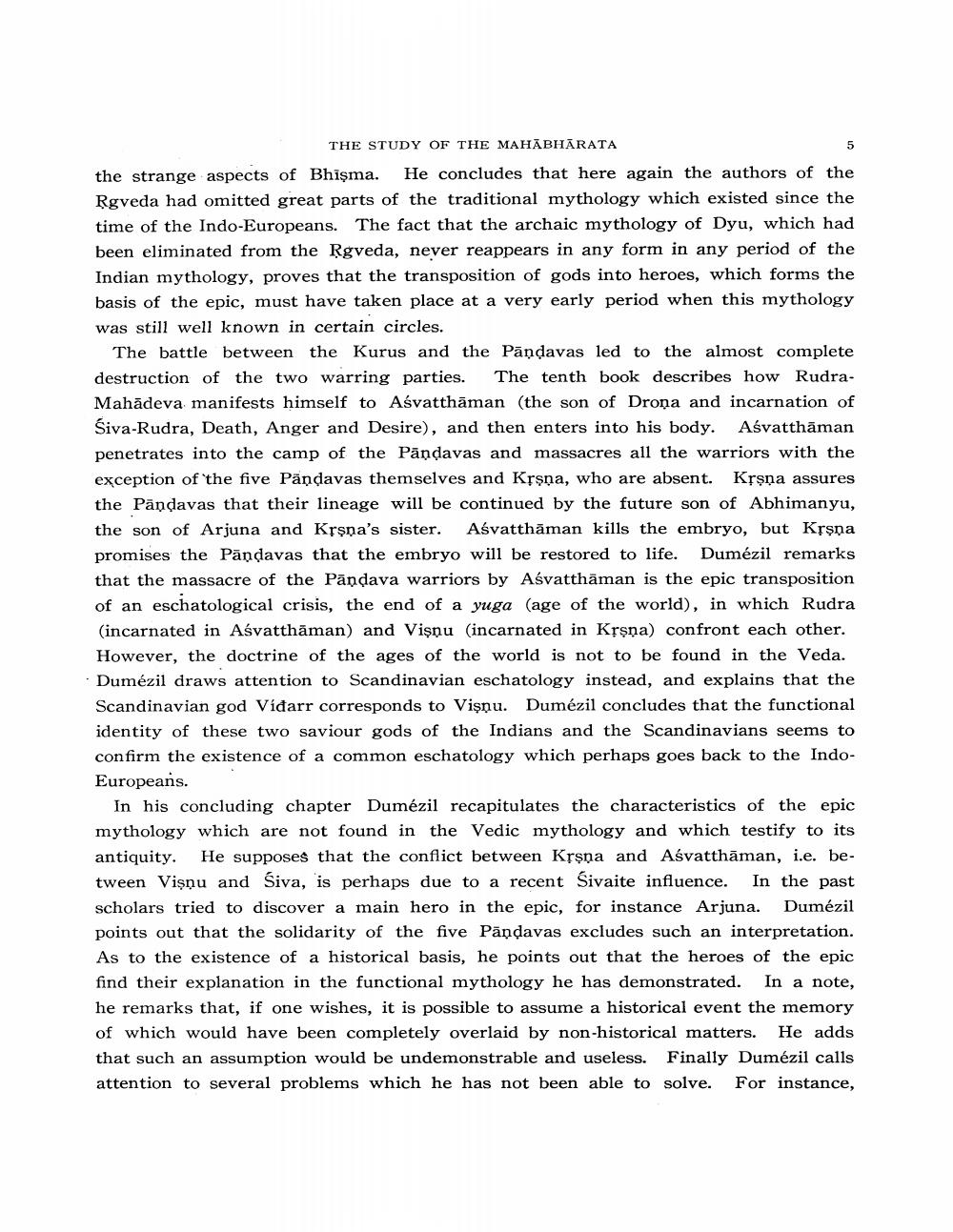________________
THE STUDY OF THE MAHABHARATA
5 the strange aspects of Bhişma. He concludes that here again the authors of the Rgveda had omitted great parts of the traditional mythology which existed since the time of the Indo-Europeans. The fact that the archaic mythology of Dyu, which had been eliminated from the Rgveda, never reappears in any form in any period of the Indian mythology, proves that the transposition of gods into heroes, which forms the basis of the epic, must have taken place at a very early period when this mythology was still well known in certain circles.
The battle between the Kurus and the Pāņdavas led to the almost complete destruction of the two warring parties. The tenth book describes how RudraMahādeva manifests himself to Aśvatthāman (the son of Drona and incarnation of Śiva-Rudra, Death, Anger and Desire), and then enters into his body. Aśvatthāman penetrates into the camp of the Pāņdavas and massacres all the warriors with the exception of the five Pāņdavas themselves and Krşņa, who are absent. Krşņa assures the Pandavas that their lineage will be continued by the future son of Abhimanyu, the son of Arjuna and Krşna's sister. Asvatthāman kills the embryo, but Krşņa promises the Pāndavas that the embryo will be restored to life. Dumézil remarks that the massacre of the Pāndava warriors by Aśvatthāman is the epic transposition of an eschatological crisis, the end of a yuga (age of the world), in which Rudra (incarnated in Asvatthāman) and Vişnu (incarnated in Krşña) confront each other. However, the doctrine of the ages of the world is not to be found in the Veda. · Dumézil draws attention to Scandinavian eschatology instead, and explains that the
Scandinavian god Viđarr corresponds to Vişnu. Dumézil concludes that the functional identity of these two saviour gods of the Indians and the Scandinavians seems to confirm the existence of a common eschatology which perhaps goes back to the IndoEuropeans.
In his concluding chapter Dumézil recapitulates the characteristics of the epic mythology which are not found in the Vedic mythology and which testify to its antiquity. He supposes that the conflict between Kệşņa and Asvatthāman, i.e. between Vişnu and Siva, is perhaps due to a recent Sivaite influence. In the past scholars tried to discover a main hero in the epic, for instance Arjuna. Dumézil points out that the solidarity of the five Pāņdavas excludes such an interpretation. As to the existence of a historical basis, he points out that the heroes of the epic find their explanation in the functional mythology he has demonstrated. In a note, he remarks that, if one wishes, it is possible to assume a historical event the memory of which would have been completely overlaid by non-historical matters. He adds that such an assumption would be undemonstrable and useless. Finally Dumézil calls attention to several problems which he has not been able to solve. For instance,




